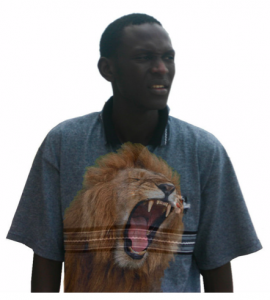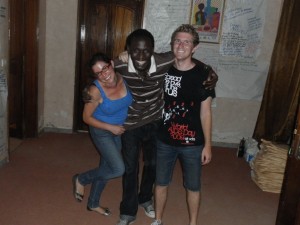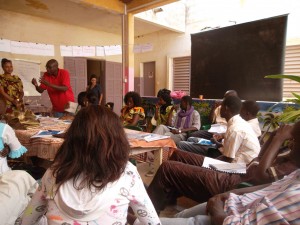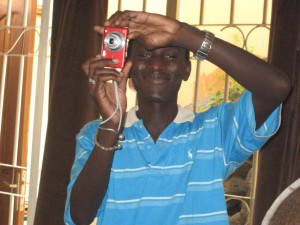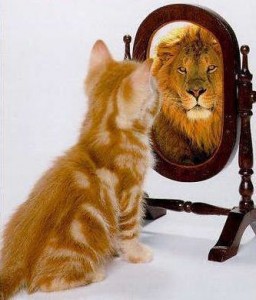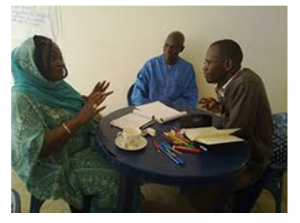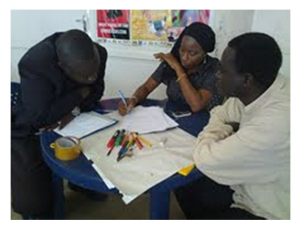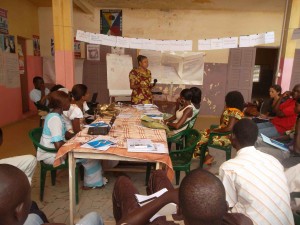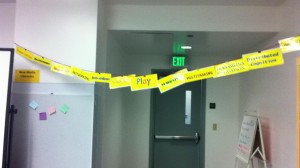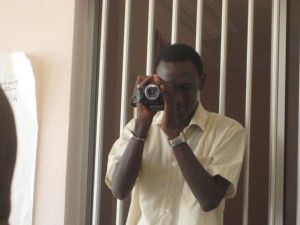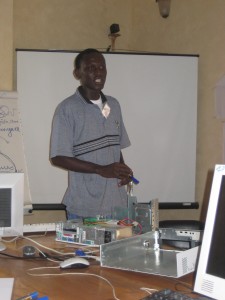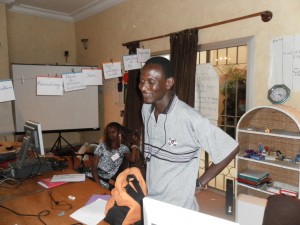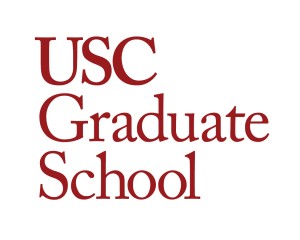Below, feast your eyes upon the penultimate draft of our case study in participatory professional development (NOTE: some of the images and links may not come through). I was up until 3:30 am editing this mother. I’ve known for years that things take 3x as long as I think they should. Still, my thick skull just can’t accept it…
PLAY! (Participatory Learning and You!) Pilot –– A Participatory Action Research Approach to Professional Development with Los Angeles Unified School District Educators, Grades 6-12
by Vanessa Vartabedian & Laurel Felt
Overview
Introduction
From the start, our work has focused on young people and participatory culture. We believe that all young people deserve to have the skills, access, knowledge, and guidance required for meaningful participation in the new media landscape. We believe that support should emanate from youths’ holistic learning ecosystems, and that lessons learned in informal contexts merit respect inside the classroom. We believe that useful education not only provides scaffolding now but gives students a sustaining sense of empowerment that helps them to lead creative, rewarding lives.
Participatory culture is not “learning 2.0,” a term derived from the concept of “Web 2.0.” Web 2.0 is a business plan, pure and simple, while participatory culture describes a cultural, political, and educational movement to ensure greater grassroots access to means of cultural production and circulation. While we have seen dramatic expansion in the communication capacities accessible to everyday people in the 21st century, especially youth, we also know that many are not yet able to participate, locked out by both the digital divide (which has to do with access to technologies) and the participation gap (which has to do with access to skills, knowledge, and support). Schools, museums, libraries, and other public institutions are best situated to help young people overcome these challenges, but only if they move beyond fear of the digital and confront its mixture of risks and opportunities from an informed and engaged perspective.
PLAY! (Participatory Learning And You!)
PLAY! is the acronym for Participatory Learning And You!, a research project based at the University of Southern California’s Annenberg School for Communication and Journalism. Principal investigator (and noted media scholar) Henry Jenkins leads this and all of the other Children, Youth, & Media oriented projects at the Annenberg Innovation Lab. PLAY!’s mission is to promote participatory, playful, learner-centric educational opportunities. In addition to their own inherent rewards, such opportunities also offer contexts for practicing the social, cultural, and emotional skills needed for success both online and offline. PLAY! has found that its philosophies are most easily embraced and its desired outcomes are most effectively attained when situated in learning cultures that honor:
heightened motivation and new forms of engagement through meaningful play and experimentation;
learning that feel relevant to the learners’ identities and interests;
opportunities for exercising creativity by using a variety of media, tools, and practices;
co-learning, where educators and students pool their skills and knowledge and share in the tasks of teaching and learning; and
an integrated learning system – or learning ecosystem – where connections between home, school community and world are enabled and encouraged (Project New Media Literacies, 2010).
Central to PLAY!’s goals is the cultivation of learning through play. The ground-breaking white paper Confronting the Challenges of Participatory Culture: Media Education in the 21st Century (Jenkins, Purushotma, Clinton, Weigel, & Robison, 2006) identified play as a new media literacy, defining it as “the capacity to experiment with one’s surroundings as a form of problem-solving” (p. 4). Risk is an inherent element of play; risk is what can make play seem intimidating or even untenable to teachers, and what transforms curricula from rote task fulfillment to original discovery. In order for true play to occur, teachers and students must co-create a classroom culture in which everyone feels safe to experiment creatively and fail productively. In formal education settings, many have mixed feelings about embracing this concept. For students, play might invoke fears of personal failure and/or loss of face; for teachers, play requires letting go of prescribed outcomes and potentially jeopardizing standards-dictated timelines. Outsiders often misunderstand play as indicative of lack of: engagement (i.e., a playing student is “off task”); rigor (i.e., a playing student is not doing “real work”); or priorities (i.e., a playing student is failing to use time wisely). We have learned, however, that play boosts many students’ levels of engagement, knowledge retention, skill proficiency, and self-efficacy. With permission to experiment and discover, students and teachers alike witness their fears and resistances dissolve — and are enabled to join in the process of playful learning.
The following sections will discuss the PLAY! group’s recent research, articulating how:
applied experiences in the field led to the development of the characteristics of participatory learning (CPLs);
CPLs were integrated into programming for youth and educators; and
outcomes from these programs further informed the PLAY! framework.
The New Media Literacies
In order to investigate and advance the ideas illustrated in Confronting the Challenges of Participatory Culture (Jenkins et al., 2006), Henry Jenkins formed the Massachusetts Institute of Technology-based research group Project New Media Literacies (NML). Central to the paper is the idea of literacy as shifting from individual expression to community involvement, where creative manifestation and active participation are hallmark characteristics. The eleven new media literacies (NMLs) identified in the white paper, as well as a twelfth – visualization – which was added in 2008, explore some of the cultural competencies and social skills that young people need to fully engage in a digitally connected, culturally diverse world.
Despite the connotation, embracing the NMLs is not synonymous with gaining proficiency in digital hardware or familiarity with high-tech software. Rather, taking up the NMLs involves applying both new skills (such as transmedia navigation) and established skills (such as judgment) to contemporary challenges across high-tech, low-tech, and no-tech environments. Collectively, the NMLs support students’ self-efficacy throughout the learning ecosystem (both online and off).
As the media literacy movement has evolved, so has its objective. Whereas the movement began with the goal of teaching students to analyze the media they consume, it now aims to scaffold students’ recognition of themselves as both consumers and creators of media. Such learning, however, all too frequently is relegated to electives or after-school programs; media literacy education is conceptualized as optional. Because extra-curriculars are often eliminated, and isolated, infrequent instruction is less effective than integrated, regular practice, Project NML sought to introduce the new media literacies across all curricula and throughout every space where learning occurs. NML’s Moby Dick project provides a case in point. Students dynamically transformed this complex, and often intimidating novel, by remixing it with relevant themes and contemporary cultural references, then performed it on stage for their community. Applying the NMLs to traditional content allowed students to achieve learning goals as well as more deeply engage with the material. This produced teachers’ strategy guide Reading in a Participatory Culture and Title of Book (in press).
The new media literacies allow us to think in very new ways about the processes of learning because they acknowledge a shift from a top-down model of pedagogy to one that invokes all voices and all means of knowledge-building. Viewing learning as: emergent rather than pre-structured; transmedia rather than unified; situational rather than universal; and collaborative rather than hierarchical is what we mean by participatory learning (Reilly & Klink, 2012).
Participatory Culture
Insert Participatory Culture Puppet Video – http://vimeo.com/33121279
“Participatory culture” is a culture “with relatively low barriers to artistic expression and civic engagement, strong support for creating and sharing one’s creations, and some type of informal mentorship whereby what is known by the most experienced is passed along to novices” (Jenkins, 2006, p. 3).
Participatory culture is actively co-constructed by its members. Four common practices, referred to as the “4 C’s” (Jenkins, 2007), establish and propel participatory culture: connecting, creating, collaborating, and circulating. See definitions and examples below:
Connecting – affiliating formally and informally;
Examples: linking on sites such as Facebook, establishing membership in a community.
Creating – developing original work or adding value to existing work;
Examples: graphic designing, digitally sampling, writing fan fiction.
Collaborating – joining a collective effort;
Examples: maintaining Wikipedia, spoiling Survivor.
Circulating – disseminating products across social networks;
Examples: podcasting, blogging.
These practices of participatory culture are highly social, often realized by negotiating across cultural differences, navigating the complex media landscape, pooling knowledge with others, and engaging with new media. Despite their importance, however, social skills and practices associated with participatory culture are most commonly learned outside of school, through membership in informal learning circles, including those that some young people are entering through their interests and hobbies, through their fandoms or through their engagement with games. Connected learning (Ito, 2012) argues for helping young people to articulate what they gain from their participation in these circles. PLAY! contends that participatory culture engagement and the new media literacies need to be coupled with a core set of values that encourage reflection upon the ethics of participants’ choices as media producers, circulators, and neighbors in diverse communities of practice.
Participation Gap
Bridging the participation gap, or redressing “the unequal access to the opportunities, experiences, skills, and knowledge that will prepare youth for full participation in the world of tomorrow” (Jenkins et al., 2006), presents a challenge for formal and informal settings alike. Wartella, O’Keefe, and Scantlin (2000) similarly concluded that “…closing the digital divide will depend less on technology and more on providing the skills and content that is most beneficial” (p. 8). While the United States is getting closer to attaining equity in access to technology via schools and libraries, it is falling behind in terms of addressing students’ skill development for meaningful participation.
Educational policy and standards.
Motivated by the demands of 21st century skills, some states have established robust media literacy standards. For example, Montana’s Information Literacy/Library Media Content Standards Framework states that, by the end of fourth grade, a student should be able to “participate and collaborate in intellectual and social networks following safe and accepted practices” and, by high school graduation, will be proficient in applying “copyright laws and fair use guidelines when using the intellectual property of others” (Montana Office of Public Instruction, 2008). In Massachusetts, the 2012 Massachusetts Test for Educator Licensure (MTEL) asks test-takers to articulate how they would incorporate social media, such as Twitter, into their pedagogy.
While these states deserve commendation, most states underserve, ignore, or even undermine to role of media literacy education. For example, California’s standards for media literacy are mainly limited to analyzing, evaluating and identifying the role of mass media. Students are not expected to utilize or interact creatively or collaboratively with media until grades 11 and 12 (California Department of Education, 2004) – much later than youth typically start engaging in such activities outside of the classroom. Simultaneously, most schools nationwide restrict students’ access to certain websites, such as social networking, video-sharing, and gaming sites, where participatory culture and its associated skills flourish.
“What a kid can do at home with unlimited access is very different from what a kid can do in a public library with ten or fifteen minutes of access at a time and with no capacity to store and upload information to the web. We further handicap these children by placing filters on the Internet which restrict their access to information which is readily available to their more affluent classmates. And now this legislation would restrict their ability to participate in social networks or to belong to online communities. The result will be to further isolate children from poorer economic backgrounds, to cut kids at risk from support systems which exist within their peer culture, and to limit the social and cultural experiences of kids who are already behind in acquiring important networking skills that will shape their professional futures. All of this will compound what we are now calling the participation gap” (Jenkins, cited in Handley, 2006).
As a place where young people spend many hours per day, and an institution that serves a socializing and preparatory function for our next generation of citizens and workers, school should support the development of basic competencies and skills related to engaging in participatory culture. But teachers’ lack of training and mentorship in this capacity, filters and laws preventing online access, misunderstandings or lack of information about youths’ out-of-school engagement and learning with media, and pressure to meet state and national requirements are just some of the factors that contribute to schools’ painfully slow shift “from fear to Facebook” (Levinson, 2010).
Free from accountability to meet state standards, after-school programs and other informal learning opportunities enjoy substantially greater “permission” and flexibility to explore participatory practices. New York City-based Global Kids Incorporated, a non-profit educational organization for global learning and youth development, has prioritized 21st century skill building to great effect. Many Global Kids participants “attend low performing schools and live in neighborhoods whose ethnic groups are largely underrepresented academically, politically and professionally” (Global Kids, n.d.), yet 90% graduate from high school and thousands have attended college. This suggests that skills acquired and honed in informal spaces can substantially impact formal academic outcomes.
Considerations For Education – Youth and Participation
Some change is not slow. For example, as of 2010, 75% of 12-17 year-olds owned cell phones, up from 45% in 2004. Daily text messaging by teens to friends has increased rapidly since early 2008. Some 38% of teens were daily texters in February 2008, and that has risen to 54% of teens who use text daily in September 2009 (Lenhart, 2010.)
They are doing it anyway. Eighty-eight percent of teens who own cell phones send an average of 50 texts per day, with 75% of the texts sent to friends and about 24% to parents or guardians (Madden, 2010). After text messaging, the most popular feature on cell phones, taking pictures and sharing them, are close seconds. Playing music just tops recording music percentage-wise. Activities such as general Internet use and even social-networking rank far below the cell phone features that allow for creating and circulating media with teens (Lenhart, Ling, Campbell, & Purcel, 2010).
And they are doing it in school anyway. Although most schools have rules preventing students from using or even having their cell phones visible, teens are still using them in class. Sixty-five percent of cell-owning teens who attend schools that completely ban phones bring their phones to school every day, and 58% of them have sent a text message during class (Lenhart, 2010).
What about Internet use? Although cell phones have aided in bridging the digital divide by providing access to the Internet, it is a cost prohibitive feature for many low-income households. Students from low-income households also have fewer computers in the home on average, and are generally reliant on public institutions to provide access (Lenhart, Ling, Campbell, & Purcel, 2010).
But they are doing it anyway! Ninety-five percent of all teens ages 12-17 are now online and 80% of those online teens are users of social media sites. Many log on these sites daily, in whichever way they can (Lenhart, Madden, Smith, Zickuhr, & Rainie, 2011).
What is the solution?
Offering teachers the opportunity to personally appreciate the value of participation and explore its practices for themselves is an important step in bridging the participation gap. Even though firewalls and other barriers to full online participation are unlikely to rollback quickly, teachers who have experienced participatory professional development are better positioned to mentor youths’ acquisition of important skills.
Professional Development
New Media Literacies Pilot – New Hampshire Early Adopters
After years of working with individual educators and their students, NML endeavored to tackle its first professional development (PD) in 2009-10 through a Title II grant with New Hampshire’s Department of Education. This pilot was focused on increasing K-8 educators’ cross-curricular use of the NMLs, and instigating all New Hampshire teachers’ NML adoption by seeding a cohort of leaders. It was designed as a blended, distance-learning model, thus enabling the affordances of both synchronous and asynchronous collaboration. The group met in person three times during the course of the PD, and intermittently for self-determined meetings, with 80% of the program taking place virtually. Participants represented a cross-section of the southern tier of New Hampshire. All of the participants were veteran teachers with over 10 years’ experience (n=6). Of the six participants, four held technology support / coordination positions beyond their teaching roles. All participants worked with elementary and middle school students, with half of the participants working across ages.
In a pre-survey, each participant was able to define media literacy, often using words in their definition such as “(being able to) understand how to use media and technology” and “the ability to analyze, collaborate and communicate using media.” However, only half of the participants had past experience teaching media literacy in the classroom, often limited to an emphasis on Internet safety, a focus on how to use specific tools, and a piece meal approach where media literacy was addressed separately from the core curriculum.
The NH Early Adopters pilot utilized the Participatory Action Research (PAR) approach – an approach that fosters co-constructed knowledge building through collaboration. PAR is a cycle of planning, action and reflection that is reiterated until a solution is found, and re-evaluated over time (Aringay, 2008). Embracing the challenge of teacher-as-action-researcher was positively related to leadership and sustainability; those who most fully engaged with the program both emerged as leaders and continued to incorporate the NMLs in their pedagogy.
The new media literacy play facilitated this praxis and learning overall. Play was the New Hampshire educators’ most coveted literacy.
“[By embedding the new media literacies into curriculum,] class projects involved more open ended starting points. Students were asked to think “outside the box” to find solutions, be creative, collaborate, research and experiment. The technology skills were not the driving force for the activity, simply a tool they used to assist them in exploration and creation. My classroom became much more of a ‘process’ classroom then task oriented.” -NH Educator
“I have truly embraced the concept of Play. I feel it is one of the most important aspects of my job as technology teacher. I want students to know that their exploration and understanding is deepened just by playing with a program or application or concept.” -NH Educator
Participating educators’ shift in disposition resulted from several of the PD’s features:
Collaboration – Modes of communication, scheduling, how time was structured, and ways in which assignments were approached were collectively decided.
Autonomy – Individual learning styles were respected, and approaches to content and course requirements were personalized.
Co-learning – Participants learned alongside each other in a non-judgmental environment valuing collective intelligence.
Coaching – Course facilitators actively supported teacher’s efforts to try-out new pedagogical approaches and strategies that felt risky or unfamiliar.
Research-based programming – Although the program was a pilot by design and implementation, the structure and content of the professional development was grounded in public research and case study exemplars.
Relevance – Personalizing the value of ‘participatory culture’ was central to teachers’ self-efficacy in implementing the new media literacies and other practices of participation in their classrooms.
Based on the varied ways the professional development succeeded and failed, the final questions we were left with were probably the first ones we should have asked: “What are the ingredients of a participatory culture of learning? And what are the practices that help build and sustain it?” Since then, these are the questions that our research group has set out to answer.
PLAY! Pilot – Not Only Child’s Work
In the spring of 2011, PLAY! piloted its first program for students at the Robert F. Kennedy (RFK) Community Schools, a K-12 complex recently built on the former site of the Ambassador Hotel where U.S. Senator Kennedy was assassinated in 1968. The surrounding Wilshire Center/Koreatown neighborhood, situated in central Los Angeles, is one of the most densely populated areas in California and home to a predominantly low-income and Latino demographic. The Los Angeles Unified School District (LAUSD) considers the six RFK Community Schools as pilot sites for innovation that prioritize global awareness, social justice and life-long learning as central missions. Connected to the library is the RFKLab, a transformative space maintained by the non-profit RFK-LA (Legacy in Action) whom PLAY! serves as academic partner.
PLAY! designed and implemented “Explore Locally, Excel Digitally” (ELED), a 15-week after-school program that invited high school students (n=12) to hone their digital citizenship through the acquisition of digital literacy skills, new media literacies proficiencies, and social and emotional learning competencies in the context of a participatory learning environment. In turn, what students learned and how they participated was used to inform the design of a two-part professional development program for LAUSD educators grades 6-12: Summer Sandbox and PLAYing Outside the Box. PLAY! orchestrated these programs during Summer and Fall 2011, respectively.
Through modeling participatory pedagogy, encouraging educators’ exploration of how such pedagogy might be realized across each of the grades and subject areas they taught, and supporting educators’ proficiency in new media habits of mind and practice, PLAY! attempted to close these teachers’ own participation gaps and, by extension, their students’ participation gaps. PLAY!’s overarching research question was, “How can we integrate the tools, insights, and skills of a participatory culture into the public education system in the United States?” More specifically:
1) How can we adapt the current NML model for integrating new media mindsets and practices into public K-12 schools?
2) How can PLAY! inform the conceptualization of a participatory model of professional development?
3) How (and in what ways) does/do the PLAY! Program impact the educational practices of public K-12 teachers in the state of California?
Summer Sandbox
Summer Sandbox is an intensive professional development (PD) workshop designed for collaborative exploration of participatory learning. PLAY! facilitators sought to foster an implicit culture of participatory learning; explicitly, they designated each day of the five day workshop to focus on an individual characteristic of participatory learning (Project New Media Literacies, 2010). Facilitators hoped that, by experiencing the rewards of a participatory learning environment, participants would go on to explore this work more deeply in their classrooms and schools.
PLAY! facilitators liaised with LAUSD’s Salary Points office so that Summer Sandbox participants would be remunerated with one salary point, as well as qualify to earn an additional salary point by participating in a Summer Sandbox extension (called PLAYing Outside the Box) during the Fall 2012 semester. The Summer Sandbox was convened at Robert F. Kennedy (RFK) Community Schools. Forty-one educators indicated interest in the program, prompting PLAY! facilitators to open a second session of Summer Sandbox for two cohorts of up to 15 educators per session. Thirty-five educators submitted applications, and ultimately 21 educators grades 6-12 completed the program: nine in the first session, 12 in the second. These educators represented 17 schools and a multitude of disciplines, from Social Studies to Physical Education to Language Arts to Life Sciences to Special Education with several challenged learners.
Twenty-eight educators completed an extensive survey prior to the Summer Sandbox’s launch. Their reports of the frequency, enjoyment, and self-efficacy with which they practiced new media literacies (NMLs) were particularly illuminating. No one claimed to practice any NML on a daily basis; the next greatest frequency, “about once a week,” was associated with NMLs Judgment, Distributed Cognition, Transmedia Navigation, Visualization, and Multitasking. Simulation and Performance were the least frequently practiced NMLs, averaging once every two months. In fact, Performance, defined as “the ability to adopt alternative identities for the purpose of improvisation and discovery” (Jenkins et al., 2006, p. 4), was the “lowest-ranking” NML across every category, including “enjoyment” and “self-efficacy”. This is potentially problematic when one considers the relationship between perspective-taking and empathy (Nathanson, 2003; Eisenberg, Zhou, & Koller, 2001). Educators’ purported distaste for play, “the ability to experiment with one’s surroundings as a form of problem solving” (Jenkins et al., 2006, p. 4), was also noteworthy, possibly indicating an unwillingness to risk failure or an alienation from unbounded exploration.
Table 1. Participants’ self-reported relationships with new media literacies
FREQUENTLY PRACTICED ENJOYED TIED TO SELF-EFFICACY
MOST Simulation, Performance Performance, Play Performance, Appropriation
LEAST Judgment, Distributed Cognition, Transmedia Navigation, Visualization, Multitasking Distributed Cognition, Visualization Judgment, Transmedia Navigation
When queried as to the type of support they would appreciate in order to variously incorporate
digital media, media literacy, learning through play, participatory learning, and new media literacies into their classrooms, educators’ responses cohered around three categories: curricular support, e.g., online support community, lesson plans, models, and examples; financial support, e.g., funds for materials (interestingly, respondents did not specify reimbursement for educational workshops or monetary reward for extraordinary effort as line-items); and personal support, e.g., administrator buy-in, professional development/training, peers’ endorsement, and classroom assistance.
Perhaps the fact that respondents did not wish for room to play or time to pursue self-guided learning should have alerted PLAY! facilitators – participants might resist the Summer Sandbox’s lack of didactic pedagogy. Perhaps respondents’ universal perception that the benefits of incorporating digital media into their classrooms outweigh the costs (a certainty that verged on digital utopianism) also should have tipped off PLAY! facilitators – participants might resent the Summer Sandbox’s lack of characterization of any specific device, application, and/or activity as a panacea. But herein lies the contradiction: While participants initially demanded these simple deliverables (and indeed persisted in voicing disappointment over the PD’s failure to provide such easy-to-package goods), they later admitted to craving respect and autonomy, and agreed that “one size does not fit all” — no single solution can complement every school culture, every classroom’s equipment, every teacher’s style, every learner’s profile, every subject, every ability level, everyday. What works for one person might not work for another, and what qualifies as timely today might be passe tomorrow. PD participants are usually required to accept packets of hand-outs, listen to “expert” instructors, and fill out worksheets. Largely, their voices and needs go unheard. But the goals of PD should be to support participants’ realization of their own learning goals, encourage participants to connect with resources that will facilitate curriculum design and implementation, and sustain participants’ professional longevity.
Accordingly, the Summer Sandbox’s curriculum included (but was not limited to): hands-on activities; individual and small group challenges; community partners’ resource presentations; critical dialogues; artifact manipulations (e.g., both analog and digital tools and toys, with personal relevance to instructors and found in the environment); expert sharing sessions; and curriculum construction. Exploration, practice, and remix of Challenges on the PLAYground, PLAY!’s online platform# also complemented the Summer Sandbox.
Participants were invited to inform their co-learners about their strengths and challenges so that the riches of the community could be identified and maximized.
On a daily basis, participants also were welcomed to declare which parts of the session were working for them and which parts could benefit from retooling.
Collectively, these experiences were designed to provide participants with opportunities to:
showcase identity;
build capacity and community;
gain familiarity with new media literacy skills, social and emotional learning skills, and the
characteristics of participatory learning;
meaningfully integrate new technology practices that heighten engagement in learning;
evaluate how well their classrooms support participatory learning;
rethink curriculum design to incorporate participatory learning practices;
reflect on pedagogy and offer feedback to others in face-to-face and mediated contexts; and
have fun.
Summer Sandbox participants Frank and Larry take a moment to
enjoy the sunshine and get to know one another.
Fun-loving Summer Sandbox participant
Nanette mugs for the (iPod Touch) camera.
In terms of technology, the Summer Sandbox modeled various digital media, utilizing such resources as wikis, blogs, video-sharing sites, online presentation software, mobile devices, mobile app’s, and the online PLAY! platform. The PD also modeled the productive use of non-digital media and technology, such as analog art and writing tools, face-to-face conversation, and personal treasures. This approach emphasized the philosophy that technologies should be judged in context, according to their capacity to help learners meet learning goals. No single technology, whether high tech, low tech, or no tech, is an unqualified boon. If a lesson’s objective is to increase students’ fine motor control and manual dexterity, then a pair of scissors and piece of heavy lace might be more appropriate tools than an iPad. Additionally, PLAY! facilitators refused to assume the position of expert# and unilaterally teach participants any given technology. They challenged participants instead to reflect on their discrete lesson’s learning goals, identify tools that might help meet those goals, search for and locate those tools, learn how to use them through play (i.e., seeing what happened when they experimented), and incorporate or reject according to the tools’ potential. When time permitted, facilitators also sat down beside participants and joined them as co-learners# in the process of pursuit and discovery.
For management of curricula and communication, the Summer Sandbox relied upon a wiki (playnml.wikispaces.com). This resource increased ownership of and participation in the PD experience by providing space for asynchronous or textual (as opposed to oral) reflection. It also opened the possibility for democratic and accessible note-taking for one and all since the pages were open to editing. As participants developed curricula or discovered tools throughout the week, they were encouraged to upload them, potentially benefiting peers through the delivery of a resource and benefiting themselves by virtue of the pride that accompanies tangible accomplishment and the productive feedback that peers can generate.
teachers’ testimony from Summer Sandbox: http://vimeo.com/30071237
links to raw video interviews:
Week 1: http://techtv.mit.edu/collections/newmedialiteracies/videos/13958-summer-sandbox-week-1
Week 2: http://techtv.mit.edu/collections/newmedialiteracies/videos/13959-summer-sandbox-week-2
PLAYing Outside the Box
In order to support Summer Sandbox graduates’ implementation of participatory learning, PLAY! offered a PD extension called PLAYing Outside the Box (POTB). Its structure was even less prescriptive than that of the relatively malleable five-day immersion; POTB was conceptualized more as a service than a seminar, designed for scaffolding self-directed professionals’ thinking and doing. In addition to a second salary point and $1000 stipend, members of POTB also benefited from tailored, one-on-one mentoring, continued access to like-minded communities of practice, and outlets for demonstration of and reflection on experiments in curriculum and pedagogy.
Participants.
Approximately half of the Summer Sandbox graduates enrolled in the POTB – four of the first session’s nine participants, and six of the second session’s 12 participants. These 10 POTB educators hailed from 10 different schools which are located up to 20 miles apart, and run the gamut in terms of student populations’ socioeconomic and developmental profiles.
Participants’ Goals.
Throughout the Summer Sandbox and PLAYing Outside the Box, teachers’ goals for participating remained consistently centered on heightening student engagement, increasing the relevance of curricular materials, and connecting with peers through learning and enjoyment:
“I hope to learn about different types of technology or applications and have it fit into my curriculum. I also hope to meet people who are already using the technology so that I can learn from their experiences. I hope to be able to walk away from the workshop with concrete digital media projects for all my classes.”
“I am looking to expand my own knowledge and understanding of using technology as a critical learning and instructional medium. I would like to learn new ways to design relevant lessons and projects for my students.”
“I hope to learn innovating strategies that will enhance my lessons, which will challenge my students to become 21st Century learners. In addition, I hope to develop relationships with fellow colleagues and form a partnership with neighboring schools and organizations.”
“I want to be a sponge soaking up all of the relevant skills that I can.”
“I would like to do as much as I can with limited resources that are available to me at school and what is within my means to afford.”
Prior to Summer Sandbox, only a few participants mentioned the effectiveness of utilizing popular culture and media as points of access to curricular content:
However, immediately following the week-long Summer Sandbox, several teachers perceived new ways to address their learning goals, shifting from technocentric and digital utopian orientations to modes of participatory design and play.
“(I want to) see how the changes I’m going to make (related to participatory learning) will play out and adjust according to whatever emerges. (We’ll try) using Google Maps for mapping their neighborhoods and taking photos, making comments, recording video/audio and inserting into a timeline on Vuvox.”
“After this week, I realize that while there is some equipment I will likely purchase to help me implement my fledgling plans. However, the discussion as to the social, cultural, and political implications of using images, accessing information, and presenting information sort of made it quite urgent that my teaching from now on is informed by these discussions. For example, many of my students already own iPod Touch units, so after this week, it seems imperative that I give them an opportunity to actually use them for learning. I don’t think they understand the vast uses that a Touch may have, or if they do, it’s a trivial set of uses. Giving them materials such as mini-videos on, say, how to raise a number to a power, or a short animation that illustrates key concepts about the difference between conduction and convection would make what before seemed like a toy, instead be a familiar and positive connection to learning outside the classroom. So my future goals are to prime the pump with things like (creating) video, and creating a Challenge (in the Playground) … but to hand over the control of the content to them (within certain criteria).”
A Physical Education teacher whose initial desire was to find something for his students to do on rainy days concluded by realizing his passion for deepening learning through games. A few participants entered with the aspiration to better grasp the concepts of media literacy and left feeling ready to incorporate the NMLs into their curriculum. Finding ways for students to critically reflect on the affordances of media through no, low and high tech activities, and to enable the use of social networking tools such as Twitter in history lessons, were noteworthy shifts embraced by most participants by the end of each week.
These few examples illustrate the impact of the one-week Summer Sandbox which propelled Playing Outside the Box into motion. Individual self-reflection, in the context of a peer-driven participatory professional development, allowed for both deep collaborations with colleagues, as well as personalized outcomes.
A Curriculum for Teacher Participatory Action Research.
PLAYing Outside the Box utilized the Participatory Action Research (PAR) approach. The examples below illustrate educators’ best practices using PAR for implementing the PLAY! framework in their classrooms.
POTB Curricular Requirements with Examples of Teacher Implementation
Literature: Confronting the Challenges of Participatory Culture: Media Education for the 21st Century (Jenkins et al., 2006) was the only required reading for the program. None of the participants had read this paper, foundational to PLAY!, prior to the PD.
Discussion: Participants were encouraged to discuss the concepts and practices of PLAY! on the PLAY! wiki. A VoiceThread was also created as an option for sharing reflection. But as previously noted, the practice of asynchronous discussion was not adopted. A possible reason is PLAY! facilitators’ overestimation of educators’ general familiarity with tools such as wikis and VoiceThread. Using these in face-to-face meetings helped participants to feel more comfortable experimenting and motivation their request for a separate workshop to learn how to utilize them in classes. It was not until the last day of POTB that participants created a “Teacher Page” on the wiki to include resources and artifacts from the program.
PLAY On! Workshops: POTB participants were asked to attend eight hours of any PLAY On! workshop. The three PLAY On! workshops were: Laughter for a Change, an after-school improvisational theater workshop also open to high school students; AnimAction, an animation workshop held on Saturdays only for educators; and KCET Departures, a community storytelling workshop held on Saturdays only for educators. Collectively, these programs ran the gamut from no to low to high tech, and all supported civic engagement through storytelling by emphasizing ways in which teachers and their students could work toward a more participatory approach of learning. PLAY On! facilitators were community partners with PLAY! whose contribution of improvisational techniques, animation tools, and multimedia allowed teachers to truly immerse as learners in creative, collaborative settings.
Teachers mark and annotate their schools’ neighborhoods in Los Angeles during a
KCET Departures session.
Teachers draw animation frames with AnimAction during a Saturday workshop.
Video still from teachers’ AnimAction project about online participation
Coaching: Each participant received one-on-one mentorship on an ongoing basis. This support, offered both in-person and virtually, was intended to facilitate the sustainability of educators’ efforts, help them to realize the goals they had set for themselves during the Summer Sandbox, and inform our research on participatory learning. From the program’s beginning to end, the PLAY! staff person assigned to this mentorship role noted educators’ increased self-confidence and self-efficacy, as well as their appreciation of support throughout their processes of experimentation. Some educators used this time to troubleshoot issues with new technologies. As PLAY! had witnessed during the Summer Sandbox, teachers who have sufficient support and time are more likely to take on new tools that support learning goals. Since most teachers wanted to get away from the confines of the “texbook and pencil” approach to their curriculum, and were unanimously excited about engaging students in participatory practices via the Playground platform, they spent time developing Playground Challenges with their coach. A few chose to explore how to more deeply embed PLAY!’s practices and skills into their existing curriculum.
Video Reflection: Watching oneself on video and receiving supportive, critical feedback from peers and coaches has been found to support teacher efficacy (CITE). Consequently, POTB participants videotaped themselves in their classroom teaching a lesson/activity that incorporated one or more of the CPLs. They also took a few minutes after the lesson to film their own reflection on the experience. Then they uploaded their videos to a private space on Vimeo.com, where their POTB peers and program facilitators posted personalized, written feedback.
Lesson: Congressional Soccer, American Government and Economics, Grade 12
Jasmine reflects on her own lesson. Inspired by PLAY!’s philosophy,
she playfully chose to project a roller coaster background behind her.
Merri’s reflection from PLAY! NML on Vimeo.
Nancy reflects on her lesson.
You integrated the 4 Cs within your content very well. I appreciate that you made you students cognitively aware of each step in the process. The personal symbol or image representing self makes the lesson even more relevant for them as well.
Natalie’s Vimeo-based feedback to Nancy
The Playground: The Playground is an open-content, open-knowledge online system that encourages both adults and youth alike to discover, learn and teach each other. The Playground uses Challenges, or non-linear, transmedia lessons and activities designed to foster learning through play. Teachers in POTB agreed to use the platform in its alpha phase and provide usability feedback via focus groups; their key input led to the Playground’s current iteration.
Despite early technological obstacles, teachers utilized the platform in their classrooms to springboard lessons or introduce concepts, and a few who had access to multiple computers were able to fully integrate the platform by asking students to create and upload media responses to Challenges (called Your Turn’s).
“Your Turn” responses to the Challenge “#Occupy: Social Media, Art and Protest”
which asked students to post their own “I am the 99%” statement.
A couple of teachers even asked students to create their own Challenges from scratch, and others considered using it for homework assignments. Teachers without classroom access to computers or the Internet conceived of ways to use the platform to generate reflection and activities offline.
Student-created Challenge
Helen reflects on using the Playground with students
PLAY! Retreat: All of the participants from POTB met for one last session to share classroom experiences, discuss sustainability, plan for next steps, and bring to a close this phase of their PD. Certificates of completion also were awarded.
Most Significant Change (MSC).
In order to get a better sense of participants’ journeys and support participants’ own meaning-making, facilitators introduced the Most Significant Change (MSC; Davies & Dart, 2005) technique. Whereas most structured assessments only collect data on pre-determined areas of interest, MSC engineers the recording and appreciation of unexpected outcomes. For example, the Summer Sandbox post-intervention survey (which mirrored our pre-intervention survey) asked about participants’ NML proficiency and comfort with digital media, among other things. Since our survey did not ask whether and how participants’ perceptions of their students shifted, such data were not captured; and yet, that outcome did occur. Stated POTB participant Frank in his MSC narrative, “It surprises me how much I don’t give my kids the benefit of the doubt.” MSC, participatory sketching (Singhal & Dura, 2009; Singhal & Rattine-Flaherty, 2006), improvisation (Boal, 1979; McFarren, 2011), and other participatory methodologies help to uncover “meanings that are masked, camouflaged, indirect, embedded, or hidden in context” (Conquergood, 2002, p. 146) and so illuminate programs’ comprehensive impacts.
The MSC method asks intervention participants to describe their personal experiences of program-produced change, articulating “the significance of the story from their point of view” (Davies & Dart, 2005, p. 26). (See Appendix A for this activity’s protocol). While each POTB participant’s experience was unique, key emergent themes among the educators included: surrendering some classroom control in order to honor students’ self-directed learning and creativity; embracing technology and digital media even in the absence of expertise and mastery; and valuing process over product — escaping the tyranny of perfection.
Frank
Frank admitted to change in profound ways, calling his story “Breaking Down the Wall.” Explained Frank, “When I first started the project I was interested because it said NML and I thought I knew what it meant. I was totally bombarded by things that I didn’t know but I was very intrigued… Being there [in the Summer Sandbox] resonated this feeling within me, Okay, this is what I should be doing in the classroom… Leaving that summer instruction that we did [the Summer Sandbox], I was excited to try out some of those strategies with the students… I let myself go, where I could just give kids tools, [tell them] ‘This is what you have to create but I’m not going to tell you how to create it.’”
For Frank, the kids in question are middle school students from primarily low-income, Latino backgrounds. Frank confessed, “I forget about the creative side of education. I know that testing’s important for them but at the same time, education should not hinder the creative process. What if I have a future poet in my classroom?” he mused.
“The wall [referred to in the title of this change narrative] metaphorically represents the barriers that ironically education builds up for our students because they get categorized.” Frank summed up the job of educators as “enabling the students to break down those walls through different avenues.”
Nancy
Nancy, a high school social studies teacher with a special interest in human rights, named her story “Letting Go.” Elaborated Nancy, “I would say that the number one most significant change was the idea of just letting go completely. That I can make mistakes and my students can make mistakes and that that is okay. And that it all is a learning process. And that really was — even though I consider my classroom to be open and constructive — I still found that I was sort of controlling and that I was looking for perfection not just in my students but in myself. And this freely allowed me to open up this idea of letting go.”
In her classroom during the school year, Nancy translated this philosophy into practice by “…allowing those rubrics to be more flexible, allowing students to redo, allowing them to, as part of their grade, [explain] what were they frustrated about, what worked, what didn’t work. And so, making the whole process part of the grade, as opposed to [only] the perfected final work product [determining the grade].”
Nancy’s U.S. Government class examples of ‘no’ and ‘low’ tech versions of using Twitter for creatively assessing her students’ knowledge about historical figures by “meeting students where they’re at with what they’re already doing.” (Nancy)
Students’ responses were not universally warm, confided Nancy. “I would say 80% of the students were beyond thrilled… those students who were atypical students, who feel uncomfortable, they fought it a little bit. But overall I think it was a positive experience.”
Jasmine
High school history and government teacher Jasmine dubbed her tale “Giving Voice to the Youth.” Said Jasmine, “I always liked technology and using it in the classroom. But this year I’ve definitely integrated it more into pretty much every project. In the past I was worried about that I didn’t have all the skills necessary to teach them things or we didn’t have all the equipment or they didn’t have it at home. But I thought, This year, let’s just go for it. And I was open to students participating in whatever way they could.” Jasmine credits this embrace of not only technology but also experimentation and co-learning to the Summer Sandbox. “I think the professional development that we had in the summer was very, very inspiring, because I met so many different teachers and I learned so much about all the things that they were doing in their classroom…”
Subsequently, she modified her curriculum extensively, introducing a project in which students visited the Occupy L.A. encampment and created a PLAY! platform challenge to shareout their learning. “Our kids have made songs. They’ve made videos. They’ve done stuff online. And I actually think they’ve learned a lot.”
Student Work: Occupy LA Animation from PLAY! NML on Vimeo.
Continued Jasmine, “This is the first year that, after a unit is over, students come back to it and they’re like, ‘Oh, Miss, did you hear that this happened with Occupy L.A. or on a Facebook page?’ They’ll just post videos and news stories about it and talk about it. And I’m like, ‘Well, that’s cool.’ I think that this year my students have definitely gotten more engaged with the world.”
A classroom viewing of Chinese documentary Please Vote for Me ignited students’ curiosity. “They said, ‘Can we have our own election?’ I was like, ‘Well, I wasn’t planning on it, but okay, let’s do it…’ And in there I integrated things about campaigning and media, and so we became a class congress, and so they’re learning how bills get passed but by doing it themselves…
“It has involved letting go, and just being very, very experimental. And being okay with it if it’s not perfect. But,” Jasmine smiled, “I think we’re having a really good experience.”
Natalie
“Becoming Tech Savvy” is the title of language arts specialist Natalie’s account.“Being able to acquire the skills to use different digital tools… being able to navigate various issues that came up… It empowered me, made me feel more confident as an educator in the 21st century because, while I assume that my students know a lot, on the other hand, they don’t, and yet they are very familiar with a lot of what social media is and how it’s what engages them, and so now I feel more equipped to make my instruction relevant to them.” Natalie introduced a unit, called “Voices for Change,” in which students researched, wrote, filmed, and edited public service announcements (PSA’s) on issues of their choosing.
Natalie found herself reflecting on her passions and values alongside her students. “It inspired me to think about what kind of things do I want to change.”
Ziyi
Social studies teacher Ziyi disclosed the philosophical and pedagogical shift this program facilitated, expressed in the title, “It’s Okay to Use Technology In Your Classroom. It’s Good For The Kids. It’s Good For Us. It’s Good For Them. It’s Good For Me.”
Said Ziyi, “I think the change that’s occurred for me is really personal. In the beginning I had really felt like technology was great and I did not quite see how it would fit into the classroom. In fact, a lot of times I felt like I was sort of like cheating the kids, because we’re having fun instead of really learning… And thank goodness I’ve been involved in this and thank goodness we’re encouraged to allow the students to play with technology and explore and learn different skills.” Ziyi asked her students to paste into a Powerpoint historical images that would help to explain the Industrial Revolution. This assignment allowed her students to practice several NMLs, including judgment, transmedia navigation, and visualization.
Logistical issues, such as reaching farflung computer labs, learning different processes for doing the same thing on Macs and PCs, and accommodating the capacities and limitations of iPads bedevil Ziyi and gobble precious time. Concluded Ziyi ruefully, “The big change I really need is why can’t we add more hours to our day. That’s what I need.”
Sustainability.
Despite these passionate educators’ dedication, several issues still challenge comprehensive and long-term sustainability of PLAY!-related practices and networks. Among them, lack of time is the most significant. Educators need paid time outside of the classroom to develop curricula and assessments, seek inspiration and reflect on experiences, and engage in mentorship relationships (both as teachers and as students, for both impart rewards). When these aforementioned activities are conducted socially as opposed to individually, embedded within and supported by a community of practice, then their richness increases. Of course, so does the complication factor of scheduling. Simply, educators need more paid time outside of the classroom. They and their students also need more free time inside of the classroom to build community and culture, to explore new processes and pursue emergent opportunities, to ensure that formal schooling doesn’t prevent true education.
Additional sustainability challenges include: firewalls and Internet filters commonly installed on school networks that deny users’ access to social networking, gaming, and other sites in which rich collective experiences can be enjoyed#; inadequate digital technology at school (related to difficulty in booking lab space and equipment, or simply not having those resources at all); equity/access differentials to digital technology out of school due to families’ various income levels and purchasing decisions; lack of administrator buy-in (to the point of forbidding the use of mobile devices); lack of co-teachers’ support (who often become annoyed with students using mobile devices in their classes and threaten confiscation).
PLAY! facilitators observed that, despite the program’s robust wiki use and participants’ own (required) posting to the wiki on various occasions, neither the space nor the practice was whole-heartedly taken up; thus, two months after the conclusion of POTB, the wiki is all but abandoned. Because POTB educators are so spread out across the sprawling district, they are unlikely to bump into one another regularly or even randomly. Absent from these virtual and physical common grounds, POTB graduates risk losing touch.
Such a fate would be an anathema to Ziyi, who declared at the program’s concluding retreat, “I really need us to somehow continue. Because not many people in the district are doing this kind of stuff and it’s difficult to get a group together that’s doing just creative things like everybody else is doing… I just need the opportunity and a place and time for us to have future gatherings like this. Because I’ve gotten a lot out of it and just to see what other people are doing is really inspirational and it gives me ideas about what I could do on my own classroom. So I need more. Please don’t let it stop.”
Conclusion
…
Some schools are actively embracing participatory culture by designing new types of schools, describing their approach as ‘hybrid’ or ‘blended-learning’. By design, such schools incorporate the affordances of participation into the construct of learning through access to an extended learning ecosystem. Although these schools are still held accountable to state standards and, as such, still must serve prescriptive learning goals, there exists new potential for students’ autonomy. By emphasizing process and giving permission to play, these models give students opportunities for personalization and participation in the design of their own learning experiences. Accordingly, students’ intrinsic motivation to pursue more relevant learning and deeper engagement with it likely increases. According to an educator and blogger on hybridhighschool.com, “Hybrid formats offer differentiation and opportunities for flexible scheduling to better serve the needs of students. The model also allows for creative approaches to providing diverse course offerings to students.”
(Include EXAMPLES?? Hybrid High is a new initiative in Los Angles… Los Feliz School for the Arts… learning spaces reminiscent of childhood play-rooms honoring connections within the larger learning-ecosystem of the school through its open floor plan.)
Other positive efforts toward opening-up access are occurring in city’s like Chattanooga, Tennessee, which is the only city in the country to implement a community-wide gigabit network. The city is asking some of the brightest college students from around the country to answer the question, “What could you do with the world’s fastest Internet?” PLAY! is currently in conversations with the city toward implementing its framework into teacher training initiatives for public schools. Coupled, these efforts show great promise for addressing the participation gap within a large school district.
References
California State Board of Education. (2004). California State Standards for Media Literacy. Retrieved from http://www.medialiteracy.com/documents/CalifStateStandards.pdf.
Aringay, E. (2008). Action Research. Retrieved from http://labsome.rmit.edu.au/liki/index.php/Action_research
Boal, A. (1979). Theatre of the Oppressed. Theater Communications Group: New York.
Conquergood, D. (2002). Performance studies: Interventions and radical research. The Drama
Review: A Journal of Performance Studies, 46 (2): 145-156.
Eisenberg, N., Zhou, Q., & Koller, S. (2001). Brazilian adolescents’ prosocial
moral judgment and behavior: Relations to sympathy, perspective-taking,
gender-role orientation, and demographic characteristics. Child Development, 72(2), 518-534.
Gee, J.P. (2004). Situated language and learning: A Critique of traditional schooling. London: Routledge.
Global Kids. (n.d.). About Global Kids. Retrieved from http://globalkids.org/#/about-global-kids
Handley, A. (2006). From the Digital Divide to the Participation Gap. Retrieved from http://www.mpdailyfix.com/from-the-digital-divide-to-the-participation-gap/
Ito, M. (2012). Connected Learning. Retrieved from: http://connectedlearning.tv/
Jenkins, H. (2008). The Participation Gap – A Conversation with media expert and MIT Professor Henry Jenkins. National Education Association. Retrieved from http://www.nea.org/home/15468.htm
Jenkins, H., Purushotma, R., Clinton, K., Weigel, M., & A.J. Robinson. (2006).
Confronting the challenges of participatory culture: Media education for the 21st century. Chicago: The John D. and Catherine T. MacArthur Foundation.
Jenkins, H., Ford, S. and Green, J. (2013). Spreadable Media: Creating Value and Meaning in a Networked Culture. New York, NY: New York University Press, 2013.
Jones, A. N. (2006). From the sage on the stage to the guide on the side: The challenge for educators today. ABAC Journal 26(1), 1-18.
Lenhart, A. (2010). Teens, Cell Phones and Texting. Pew Internet American Life Project. Retrieved from http://pewresearch.org/pubs/1572/teens-cell-phones-text-messages
Lenhart, A., Madden, M., Smith, A., Purcell, K., Zickuhr, K., & Rainie, L. (2011). Teens, kindness and cruelty on social network sites. Retrieved from http://pewinternet.org/Reports/2011/Teens-and-social-media/Summary/Findings.aspx
Lenhart, A., Ling, R., Campbell. S., & Purcel, K. (2010). Teens and Mobile Phones. Pew Internet and American Life Project. Retrieved from http://www.pewinternet.org/Reports/2010/Teens-and-Mobile-Phones/Chapter-2/Part-4.aspx
Levinson, M. (2010). From fear to Facebook. Oregon: International Society for Technology and Education.
Long, C. (2008). The participation gap: A conversation with media expert and
MIT Professor Henry Jenkins. Retrieved from http://www.nea.org/home/15468.htm
Madden, M. (2010). Four or More: The New Demographic. Pew Internet and American Life Project. Retrieved from http://pewinternet.org/Presentations/2010/Jun/Four-or-More–The-New-Demographic.aspx
McFarren, C.K. (2011). Laughter diplomacy: Transcultural understanding at play in Rwanda.
Theatre Topics, 21, 2, 163-173.
Nathanson, A.I. (2003). Rethinking Empathy. In J. Bryant, D. Roskos-Ewoldson, & J. Cantor
(Eds.), Communication and Emotion: Essays in Honor of Dolf Zillmann (pp. 107-130). Mahwah, NJ: Lawrence Erlbaum Associates, Inc.
Montana Office of Public Instruction. (2008). Montana K-12 Information Literacy/Library Media Content Standards Framework. Retrieved from http://opi.mt.gov/pdf/Standards/10ContStds-InfoLitLibMed.pdf
Project New Media Literacies. (2009). Early adopters working group. Retrieved from
http://www.newmedialiteracies.org/early-adopters-working-group.php
Project New Media Literacies. (2010a). Early adopters research summary: Midpoint evaluation. Cambridge, MA: Unpublished manuscript.
Singhal, A., & Durá, L. (2009). Protecting Children from Exploitation and Trafficking: Using the
Positive Deviance Approach in Uganda and Indonesia. Washington D.C.: Save the Children.
Singhal, A., Dura, L. & Felt, L.J. (2011). What counts? For whom? Valuing cultural scorecards.
Paper presented at National Communication Association 97th Annual Convention, New
Orleans, LA.
Singhal, A., & Rattine-Flaherty, E. (2006). Pencils and photos as tools of communicative research
and praxis: Analyzing Minga Peru’s quest for social justice in the Amazon. Gazette, 68(4):
313-330.
Wartella, E., & O’Keefe, B., & Scantlin, R. (2000). Growing up with interactive media:
What we know and don’t know about the impact of new media on children. Washington, DC: Markle Foundation.
Appendix A
Most Significant Change
The final evaluation of the program includes a methodology that focuses on participatory action research using the Most Significant Change theory (MSC). This technique is story-based and qualitative because it relies on a collection of stories told from the point of view of participants.
Instructions:
· Video record the responses (using the iPod Touch).
· Explain to your peer that they may use an avatar (e.g., a hand puppet) if they prefer not to have their image recorded.
Most Significant Change Questions
1. (a) Think back, from the first day you started with PLAY!’s Summer Sandbox all the way up to today… Now tell me a story about the most significant (biggest) change that you experienced as a result of your participation. In your story, tell me:
· What the most significant change was
· What happened
· When did it happen
· Where did it happen
· Who was involved
(When the participant tells their story, you can probe for details if necessary, but remember that this is their story to tell and should not be influenced by the interviewer.)
(b) If you were to title your story, what title would you give it?
2. Why was this change significant (important to you)?
3. What difference has this change made for you, or will make for you in your practice? (For example, has it shifted your attitude about X – before you used to feel like Y, and now you feel like Z?)
